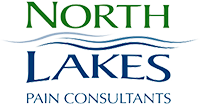Restorative Therapies for Pain Relief
Restorative Therapies for Pain Relief
Restorative Therapies for Pain Relief
It is estimated that over 20% of Americans suffer from chronic pain. That means 50 million adults in the United States are faced with pain on a daily basis for an extended period of time. There is an unfortunate yet common notion that pain management is just the use of narcotics. Many people are unaware of the life-changing therapies that fall under the umbrella of pain management which require no prescription narcotics. Although some conditions may be more receptive to integrated treatment practices than others, there are so many treatment options available to help treat chronic pain without the use of prescriptions.
What is Restorative Therapy?
Restorative therapy is a term that houses a number of different forms of treatment. Treatments provided by physical therapists, occupational therapists, physiotherapy and therapeutic exercise are all considered restorative therapy. Any of these types of therapies can be leveraged in a multimodal treatment strategy, meaning that restorative therapy is often used in combination with other treatments such as injections, epidurals, or counseling. Restorative therapies have been proved to result in more positive clinical outcomes if used as part of a multidisciplinary or multimodal treatment plan. Studies also show that the combination of restorative therapies can help provide pain relief, particularly low back pain relief for two to 18 months. One of the greatest values of restorative therapy is that it helps patients maintain functionality. Quality of life can quickly be altered when a patient is living with pain and the daily activities that may be simple can become physically difficult and uncomfortable. Integrating restorative therapy can help patients regain their sense of independence and normalcy even if they suffer from a chronic condition.
Below is a breakdown and brief explanation of the various types of restorative therapies.
Therapeutic exercise is often used as a form of therapy and is tied to the underlying diagnosis for the pain. Up until the 1980’s bed rest was the prescribed treatment for lower back pain, however, scientific evidence has continued to emerge indicating the benefits of movement over rest. The large majority of pain-related physical therapy guidelines exist for the treatment of spinal pain as back pain is the most common pain issue for pain patients. Therapeutic exercise can include physical therapy or forms of group exercise. There is an added biopsychosocial treatment approach to therapeutic exercise to help patients understand the secondary pathologies involved including anxiety or fear of movement that can contribute to pain and disabilities.
Therapeutic ultrasound (TU) delivers heat to deep tissue to improve healing, particularly injury healing. The literature on the effectiveness of TU is mixed, however, there is evidence that TU in knee osteoarthritis is beneficial.
Transcutaneous electric nerve stimulation (TENS) is a common, noninvasive form of treatment. TENS uses low voltage electrical currents to provide pain relief. These electrical impulses are delivered via electrodes that are placed on the surface of the skin near nerves or where the pain trigger points are located.
Massage therapy may not be the first thing that comes to mind when discussing treatment options but can be very effective in reducing pain. Massage therapy helps to increase blood flow and oxygen to the muscles and reduce inflammation even on a myofascial, deep tissue level. Various studies have shown that consistent massage therapy can help relieve chronic pain.
